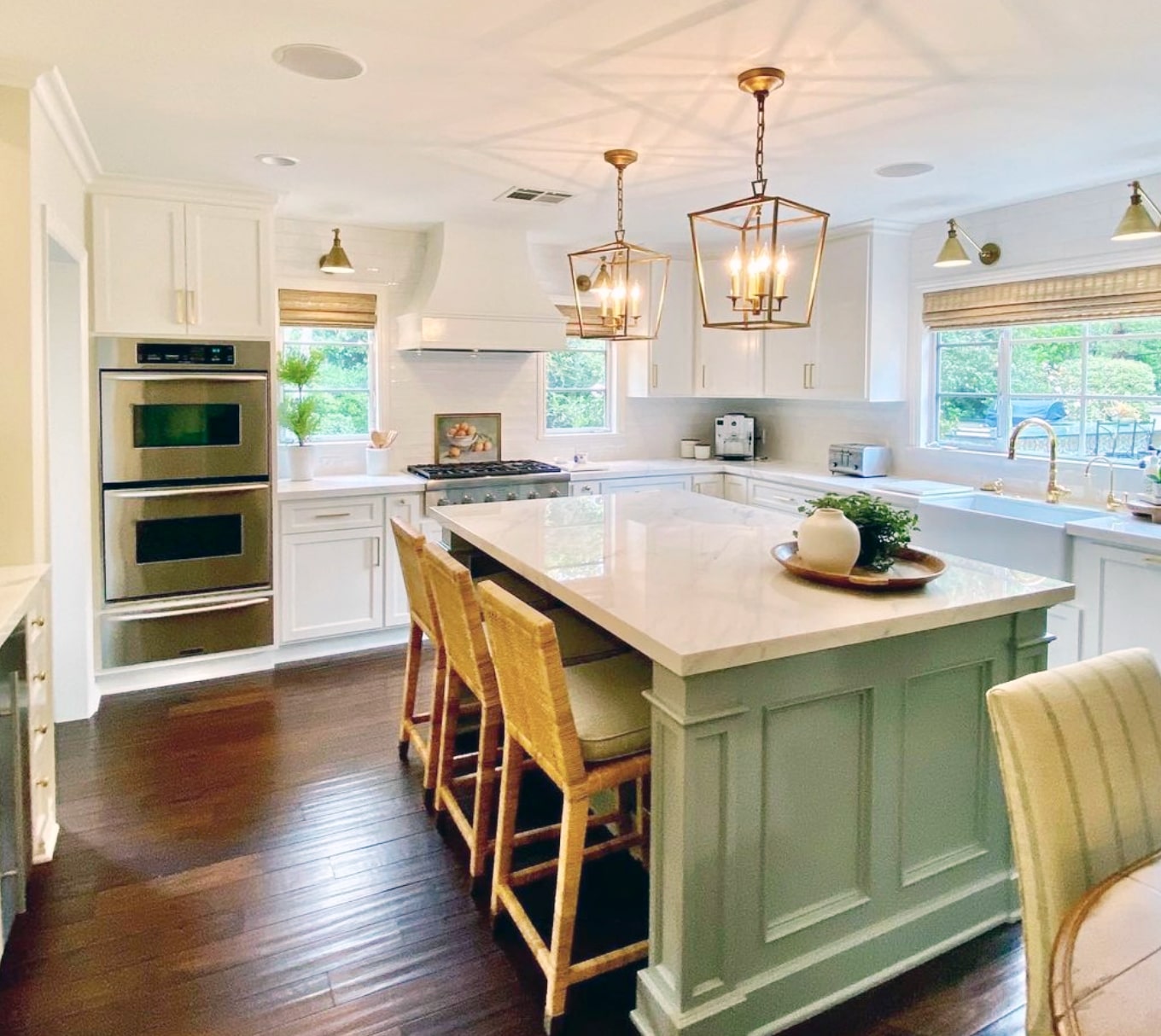An island isn’t just a functional addition; it’s the heartbeat of your kitchen. Beyond offering a dedicated space for cleaning, food prep, and dining, an island can turn your culinary space into a stylish haven by adding charm and color to it. If you’re yearning for additional storage in your kitchen, an island is a must-consider solution.
With the sea of islands to choose from, finding the perfect match can be daunting. But fear not! This blog contains expert tips for choosing the perfect island for your kitchen. Please grab a cup of coffee, and let’s dive in!
1. Consider Your Kitchen Color Palette
Like other kitchen furnishings, kitchen islands come in various colors, such as lush green, navy blue, white, sandy brown, and more. Of course, you will only want to pick something that would blend with other decor in your kitchen. So, consider the dominant color scheme of your kitchen before making a decision. For instance, if the dominant color in your kitchen is white, consider opting for islands in shades of gray or sage green to maintain a harmonious and visually appealing aesthetic.
2. The Island’s Size and Height
Size plays a crucial role when selecting an island. Islands are available in various dimensions, typically 40 x 40 inches, 80 x 40 inches, and more. Knowing the size that best fits your kitchen is imperative, as this directly impacts its compatibility. For example, if the size of your kitchen is 150 square feet, opt for an island around 15 square feet. This will fit perfectly into your space and allow clearance between other furniture.
Height is another crucial factor to consider when choosing an island. It usually determines the island’s functionality. The height also varies, depending on the function. If you want your island to serve as a breakfast station, aim for one around 42 inches tall. On the other hand, if your focus is on creating a functional workstation, the standard height of 36 inches is your ideal choice.
3. Island Shape
Before deciding, match the island shape with your kitchen layout. Doing so will let you know if the island will integrate well with your kitchen layout and complement the overall design of your culinary space. Fortunately, Island shapes are intricately designed to harmonize with specific kitchen layouts. Galley-shaped islands work well in galley kitchens, while L-shaped islands are suitable for L-shaped kitchen layouts.
4. Island Type
Kitchen islands are available in various designs and styles, from mobile cart islands to tables, fully functional islands, and compact non-portable versions. Each style caters to specific kitchen spaces and offers distinctive functionalities.
For instance, due to its wheels, the mobile cart island can be moved and relocated elsewhere when not in use. This ability makes it particularly suitable for kitchens with limited space. However, its functionality might be limited compared to a fully functional island. The absence of integral features like sinks and receptacles means that mobile cart islands serve fewer purposes and might not offer the comprehensive utility of a fully equipped island.
5. The Island Material
If you aren’t building the island yourself, examine the material before purchasing it. Doing so will let you know which material best complements other decor in your kitchen. Besides, the material the island is made of will determine the kind of purpose it serves. If the island will serve as a workstation, opt for materials like quartz or butcher block. These materials are robust, capable of enduring wear and tear, and can accommodate various kitchen tasks.
However, if your primary focus leans more toward aesthetics than heavy-duty functionality, stainless steel can be an excellent choice. Stainless steel islands bring a sleek and modern appearance to the kitchen space without compromising on style.
6. Extra Features
Choosing an island with extra features is still essential, even if you’ve decided what you want to use it for. While kitchen islands with additional features might come at a higher cost, their versatility, and ease of customization make them a worthwhile investment. If your needs shift or evolve, an island with numerous features will continually adapt to your requirements. The essential features to look out for are drawers, wine rack, prep sink, seating, trash and recycling, electric outlet, e.t.c
Conclusion
Selecting the ideal island for your kitchen is more complex than you think. Before making a decision, carefully weigh the factors we’ve outlined above. You can also check our kitchen island design ideas for more inspiration. By doing so, you’ll acquire an island that enhances your space and stands the test of time. We wish you the best of luck!
